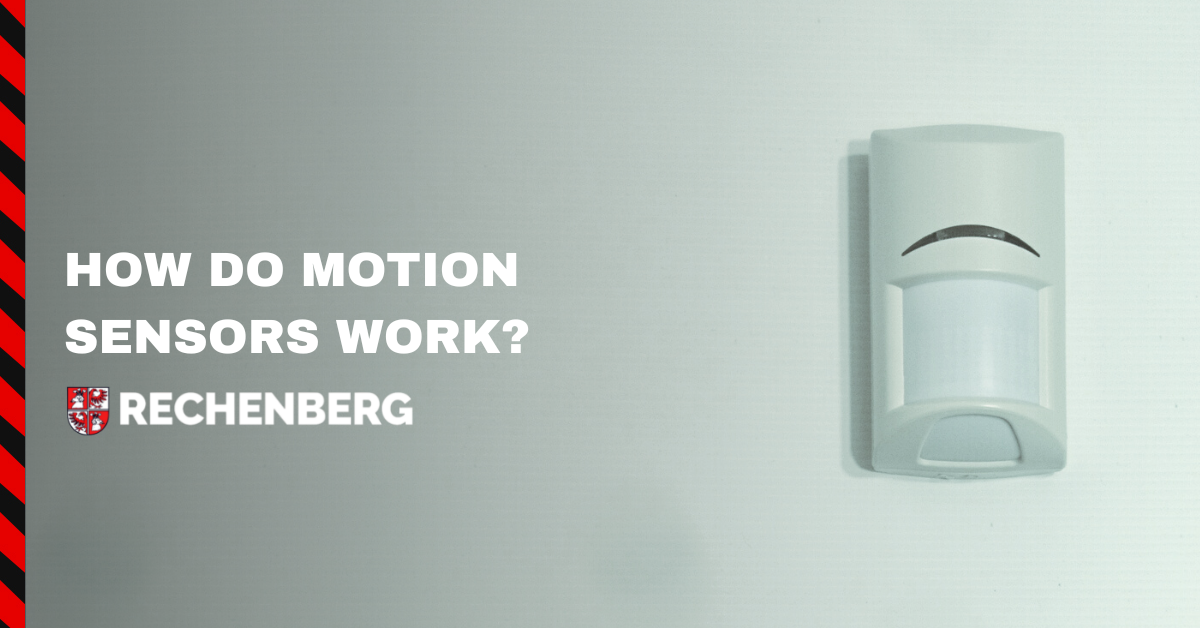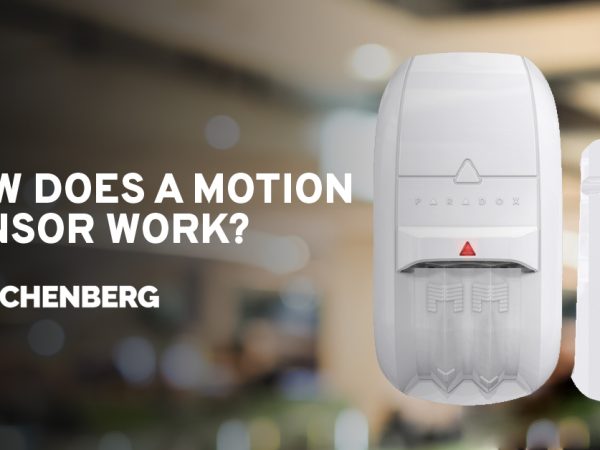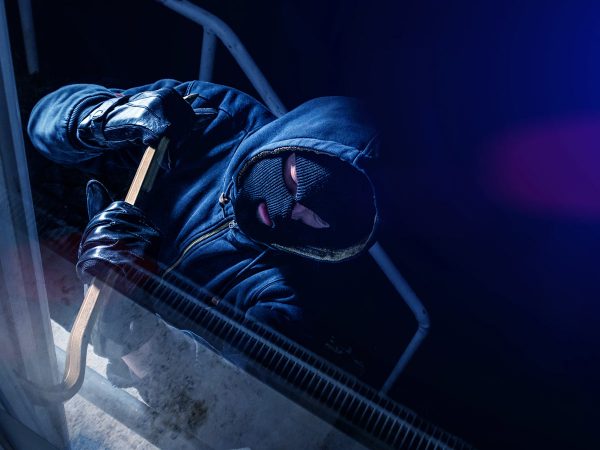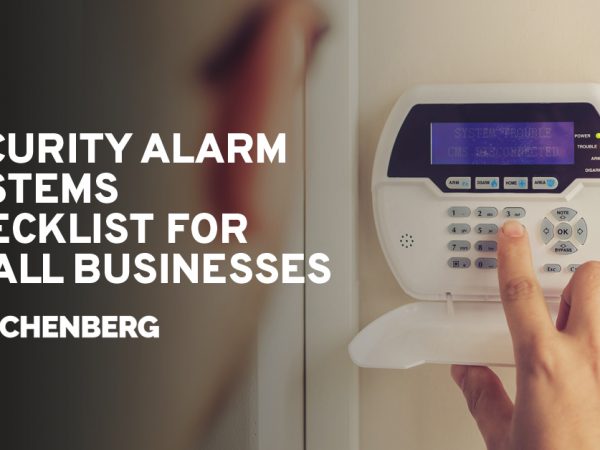
HOW DO MOTION SENSORS WORK?
A motion sensor, or motion detector, is a security device that detects movement from persons or objects through a specific area. Motion sensors are an essential part of any security system. When a sensor detects motion, it sends a notification to your security system and can be programmed to transmit an alert to a monitoring service such as Rechenberg or activate an alarm.
Motion sensors can be used to:
- Detect possible intruders that are close to or inside your premises.
- Notify you if someone enters a restricted area. This could be a certain room or entry point.
- Activate CCTV Cameras or other security features.
MOTION SENSORS COME IN TWO TYPES: ACTIVE ULTRASONIC AND PASSIVE INFRARED (PIR).
The two most prevalent motion sensor technologies are active ultrasonic sensors and passive infrared sensors, both of which are well-known for their accuracy and dependability.
Active ultrasonic sensors produce ultrasonic sound waves that are above the human hearing range. These waves bounce off nearby objects before returning to the motion sensor. A microphone within the sensor serves as a signal waypoint, sending the pulse and receiving the echo. The sensor calculates the distance between itself and the target by measuring the duration between signal transmission and reception. Most motion sensors allow you to adjust the sensitivity, which means it will not activate if the distance to the object is too great. If the received signal falls within the defined criteria, the motion sensor will activate, informing you that someone or something is close to it.
Ultrasonic sensors can detect objects of any colour, surface type, or composition (unless it is very soft such as wool, as it would absorb sound). They are the preferred option for detecting transparent objects as they do not rely on optical technologies.
PASSIVE INFRARED SENSORS DETECT FLUCTUATIONS IN INFRARED ENERGY, WHICH PEOPLE, PETS, AND OBJECTS RELEASE AS HEAT.
Everything emits heat, Walls, floors, stairs, windows, vehicles, pets, plants, and people. These temperatures are detected using the emitted infrared radiation. Infrared motion sensors detect the presence of a person or object by measuring the infrared radiation change in a specific detection area.
A PIR device contains a pair of pyroelectric sensors. When no one is present, the PIR device detects ambient IR emitted by background objects such as walls and doors. When a new heat source walks past the device, the sensor detects the change and activates the engage the alert, triggering your alarm and sending a notification to your monitoring provider.
These IR fluctuations are used by a PIR motion sensor to identify the presence of a person or object. PIR sensors, like active ultrasonic sensors, may be configured to ignore minor changes in IR, allowing you to stroll around without setting off alarms all the time.
THERE ARE SOME LESS COMMON MOTION SENSOR TECHNOLOGIES AVAILABLE
While the Ultrasonic and Infrared options are the most popular options and will suit most locations there are a few other options that can be implemented:
- Tomographic motion sensors are composed of many nodes. The nodes connect to form a mesh network. When the connectivity between two nodes is interrupted, these sensors identify the presence of a person or object.
- Vibrations created by items like footsteps can be detected by vibration motion sensors.
- Microwave pulses are emitted by microwave motion sensors. Microwaves bounce off things and return to the sensor, much like an active ultrasonic sensor. They have a greater range than PIR sensors but are more vulnerable to electrical interference.
These motion detection systems are usually more expensive and suited to specific circumstances. If you think one of these options will suit your needs please consult a professional security installation service such as Rechenberg before purchasing.
Some motion sensors are referred to as “dual technology” because they incorporate two sensor types in a single system. Active ultrasonic sensors and PIR sensors are frequently integrated into a single device to improve detection accuracy. You should always consult with a security installation company to confirm which motion sensors are the best fit for your premises.
THE RANGE OF MOTION SENSORS IS LIMITED. ASK A PROFESSIONAL TO DETERMINE THE BEST PLACE TO INSTALL THEM IN ORDER TO MAXIMIZE YOUR SECURITY COVERAGE.
Motion sensors typically have a range of up to 10 meters, thus a single sensor will be unlikely to cover a lengthy corridor or an open office. Security experts will examine the floorplan of your space to find the best location for motion sensors. Rechenberg security experts can evaluate the best place to install new devices and integrate them into any existing security features such as security cameras, and burglar alarm installations, to make you as secure as possible.
There are a few locations to prioritise or avoid when installing motion sensors to maximise their effectiveness:
- Entry points to your location are a priority. Some motion detectors are designed specifically for use near doors and windows.
- High-traffic areas and funnel points such as hallways and stairs are more likely to catch an uninvited guest because they are forced to walk through those locations when moving through your premises.
- It’s a good idea to place sensors near rooms that contain expensive objects which are likely to be targeted.
- Install PIR sensors away from heat sources. PIR sensors assess temperature variations in specific areas and might cause a false alert if positioned too close to a vent, furnace, stove, or fireplace.
- Make sure the sensor is unobstructed. If the sensors are blocked, they will not function correctly. An impediment may not be visible at first. For example, if you place a motion sensor light over your driveway, your parked car may interfere with its ability to detect activity on the sidewalk or in the street. Install the sensor in an area where there are no obstructions such as trees or fences.
- Keep the sensor clean after installation to guarantee an unobstructed lens, and remember to clean it on a regular basis.
CONFIGURE THE SENSOR’S SENSITIVITY SETTINGS TO AVOID BEING OVERLOADED WITH ALERTS AND ALARMS.
You don’t want to be bombarded with motion notifications only to discover that it was simply the family pet wandering across the room or traffic driving past your location on the road. One of our security experts can customise the detector’s sensitivity settings to your preferences and some models can set certain areas to ignore so you don’t receive any false alarms.
Motion sensors are a vital component of any security system since they are one of the most effective methods to detect intruders and other suspicious activities. Give us a call on 1300 852 138 if you would like a free quote on installing motion sensors or other security systems for your home or business. Rechenberg have been providing security solutions for over 50 years to south east Queensland.



